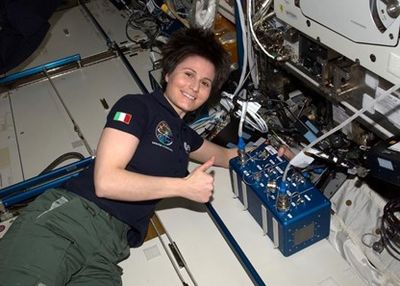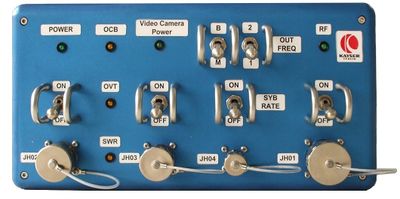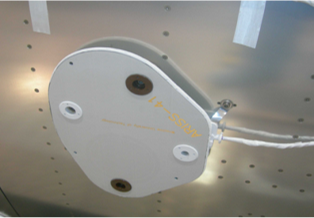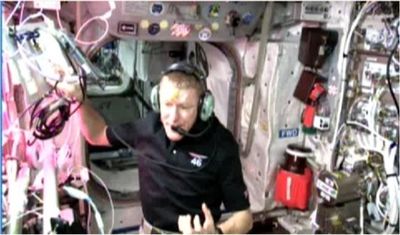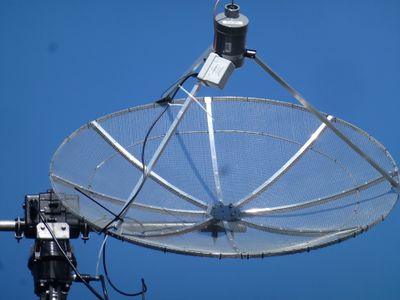Difference between revisions of "HAMTV from the ISS"
| Line 69: | Line 69: | ||
The HamTV transmission runs relatively low power on 2395MHz to a simple patch antenna on the ISS. This patch antenna is located on the earth side of the ISS but is surrounded by solar panels, thermal radiator panels, two or more visiting vehicles and robotic arms. The ISS also “flies” slightly nose down to protect the cupola windows from space debris and so the RF performance, particularly when it is rising from the west, is slightly unpredictable. | The HamTV transmission runs relatively low power on 2395MHz to a simple patch antenna on the ISS. This patch antenna is located on the earth side of the ISS but is surrounded by solar panels, thermal radiator panels, two or more visiting vehicles and robotic arms. The ISS also “flies” slightly nose down to protect the cupola windows from space debris and so the RF performance, particularly when it is rising from the west, is slightly unpredictable. | ||
| + | |||
| + | [[File:dish.jpg|400px]] | ||
This means an antenna with reasonable gain is required to receive the signal and whilst it is possible to receive the signal on a simple antenna when the ISS is overhead, to enable more than 5 minutes of reception, a higher gain antenna such as a dish with an efficient feed system is required. | This means an antenna with reasonable gain is required to receive the signal and whilst it is possible to receive the signal on a simple antenna when the ISS is overhead, to enable more than 5 minutes of reception, a higher gain antenna such as a dish with an efficient feed system is required. | ||
Revision as of 10:13, 2 March 2024
The original HamTV unit was installed on the ISS in 2013 and commissioned in April 2014 and was used for a number of ARISS schools contacts in 2016 - 2018. The unit failed in 2019 and was shipped back to Kaiser Italia for repair.
Following repairs carried out last year it now looks likely that the original HAMTV unit will be returned to the ISS with potential commissioning by a visiting astronaut during Spring 2024.
What is HamTV
HAMTV is the name of the Digital Amateur Television (DATV) transmitter on board the Columbus module of the International Space Station (ISS).
It transmits Digital video and audio in MPEG-2 format using the DVB-S protocol in the 13cms band.
HAMTV specifications
Ham Video downlink frequencies
- 2395 MHz (main operating frequency)
- 2369 MHz
- 2422 MHz
- 2437 MHz
DVB-S modulation
- Symbol rates: 1.3 Ms/s and 2.0 Ms/s
- FEC : ½
RF output
The HAMTV transmitter produces 10 watts RF, however this is then fed through a series of interconnecting cables and bandpass filter before passing through the ISS Columbus module external wall. Estimated power at the antenna is ~ 2 watts.
HAMTV antenna
The HamTV transmission runs relatively low power on 2395MHz to a simple patch antenna on the ISS.
This patch antenna is located on the earth side of the ISS but is surrounded by solar panels, thermal radiator panels, two or more visiting vehicles and robotic arms.
The ISS also “flies” slightly nose down to protect the cupola windows from space debris and so the RF performance, particularly when it is rising from the west, is slightly unpredictable.
The transmissions are right hand circular polarised (RHCP)
Video format
- NTSC
- SIF resolution: 352×240 or D1:720×480
What is HAMTV used for?
The primary use is during ARISS schools contacts, when the astronaut will use a camera to show himself and the inside of the ISS during the VHF radio contact.
It is hoped that test patterns, including JPEG images, will be transmitted when the cameras are not in use.
When will HAMTV be "on the air"?
It is unlikely that the HamTV transmitter will be on air 24/7.
During the first flight on the ISS between 2014 and 2018 it was used primarily for ARISS schools contacts but transmitter was left on at other times but no video was transmitted. This did allow groud stations to test their receive equipment and it is hoped a test signal generator will be included when it is re commissioned in 2024.
Once re-commissioned it will be tested before contacts and will be added to the Amsat status page https://www.amsat.org/status/
How to receive HAMTV?
There are a number of challenges to receive HAMTV from the ISS and a typical ground station is made up of the following elements
A typical groundstation system block diagram
Ground station antenna
The HamTV transmission runs relatively low power on 2395MHz to a simple patch antenna on the ISS. This patch antenna is located on the earth side of the ISS but is surrounded by solar panels, thermal radiator panels, two or more visiting vehicles and robotic arms. The ISS also “flies” slightly nose down to protect the cupola windows from space debris and so the RF performance, particularly when it is rising from the west, is slightly unpredictable.
This means an antenna with reasonable gain is required to receive the signal and whilst it is possible to receive the signal on a simple antenna when the ISS is overhead, to enable more than 5 minutes of reception, a higher gain antenna such as a dish with an efficient feed system is required.
A 1mt or larger dish is optimum but smaller antennas such as flat plate or patch antennas will work and have the advantage of a wider beamwidth making it easier to track the ISS.
Pre-amp and filter
A low noise pre-amp with band pass filter tuned to 2395MHz should be connected directly to the antenna feed point to minimise co-ax losses.
Note that 2395MHz is only 5MHz below the 2.4GHz WiFi Channel 1, so good filtering will be needed to prevent WiFi from getting into the wide band satellite tuner.
Do I need a downconverter
The HAMTV frequency on 2395MHz is outside the frequency range of a standard consumer set top box or satellite tuner.
Unless you are using the BATC MiniTiouner Mark 2 or PicoTuner USB receiver equipped with the Serit 4434 NIM, which can tune up to 2450MHz, you will need a frequency down converter to place the HAMTV between 950 and 2150MHz which is within the range of a standard satellite receiver.
Note: The MiniTiouner Mk1 PCB with a Sharp or Eardertek tuner does NOT cover 2395MHz and will require a downconverter.
The downconverter should be placed between the low noise amplifier and satellite receiver – placing it at the masthead will mean that lower grade feeder can be used to bring the IF signal back to the shack.
Previous suppliers of a suitable down converter, such as Kuhne Electronics, no longer market suitable downconverters and BATC strongly recommends purchasing a new USB tuner hardware using the Serit 4334 tuner rather than building or sourcing a down converter.
